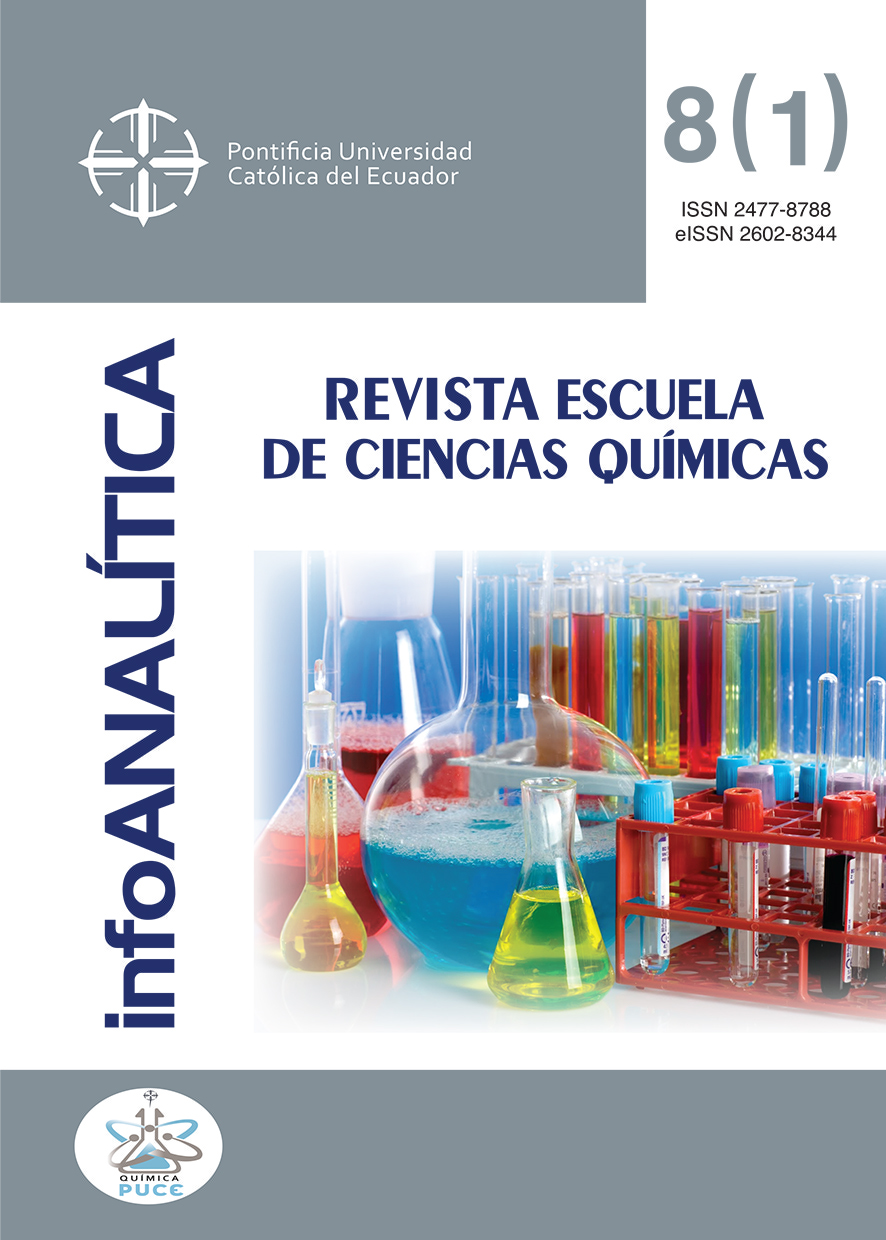CLAY MINERALS FROM ECUADOR. CERAMIC CATEGORIZATION PROTOCOL: A REVIEW
Main Article Content
Abstract
For the European ceramic sector, it is natural to recognize similar properties within a mine or mineral clay outcrop and to determine useful correspondences between the mineral nature and its properties. Thus, it is possible to predict the potential use of a batch of mineral, to agree on its influence on production and to prevent changes that could generate losses, minimize productivity and affect the quality of the products. In Latin America, and especially in Ecuador, there is a lack of information regarding the technological properties of raw materials used in the ceramic sector. Indeed, only a few industrials, artisans and research centers carry out formal studies to minimize the effect of raw materials in productivity and to control it. Given the lack of knowledge to address this problematic, this paper suggests the use of a protocol for the characterization and evaluation of clay minerals, that could be used for both the artisanal and the industrial ceramic sector. In this way, this work has focused on exposing the technological and ceramic characteristics of clay minerals from Ecuador’s highlands, establishing its classification and presenting its potential application within the ceramic sector, based on the proposed categorization protocol.
Downloads
Article Details
- The authors agree to respect the academic information of other authors, and to assign the copyrights to the journal infoANALÍTICA, so that the article can be edited, published and distributed.
- The content of the scientific articles and the publications that appear in the journal is the exclusive responsibility of their authors. The distribution of the articles published in the infoANALÍTICA Journal is done under a Creative Commons Reconocimiento-CompartirIgual 4.0 Internacional License.
References
Guillén J., Briviesca S. & Escudero R. (2012). Caracterización y evaluación de un depósito de caolín de “Los Azufres” Michoacán, México, para su uso industrial. Bol. Soc. Esp. Ceram. Vidr., 51(6), 329-336.
Amorós, J. L. (1998). Manual para el control de la calidad de materias primas arcillosas. Instituto de Tecnología Cerámica. España.
Mitchell D. (1974). Comments on the quality control of clays. Ber. Dt Keram.Ges., 51, 5-8.
Murray H. (2000). Traditional and new applications for kaolins, smectite and palygorskite: A General Overview. Applied Clay Sci., 17, 207-221.
Nayak P. S. & Singh B. K. (2007). Instrumental characterization of clay by XRF, XRD and FTIR. Bull. Mater. Sci. 30(3), 235-238.
Paetsch D. (1973). El control eficiente de materias primas. Interceram, 2, 110-112.
Paetsch D. (1977). Sobre el control de las materias primas en cerámica. Bol. Soc. Esp. Ceram. Vidr., 17(3), 151-161.
Poirier T., Baena J., Picardo C. & Hung X. (2014). Relevancia del factor materia prima en un proceso cerámico industrial: Un caso de estudio venezolano. Revista de la Facultad de Ingeniería Universidad Central de Venezuela, 29(3), 103-113.
Santos J. D., Malagón P. Y. & Córdoba E. M. (2011). Caracterización de arcillas y preparación de pastas cerámicas para la fabricación de tejas y ladrillos en la región de Barichara, Santander. Dyna, 78(167), 53-61.
Torres J., Gutiérrez R., Castelló R., & Vizcayno C. (2011). Análisis comparativo de caolines de diferentes fuentes para la producción de metacaolín. Rev. LatinAm. Metal. Mat., 31, 135-143.
Uribe R. (2015). Investigaciones de materias primas minerales no metálicas en el Ecuador. Revista Politécnica, 36(1), 34-44.
Vázquez F., Torres L., Garza L., Martínez A. & López W. (2009). Caracterización por XANES, análisis mineralógico y aplicación industrial de un depósito de caolín de México. Materiales de Construcción, 59(294), 113-121

